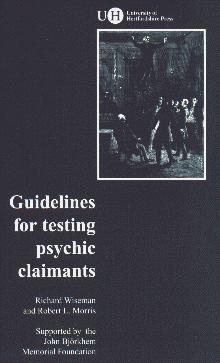
Many people claim to be psychic. Palm readers and astrologers claim that they can look into the future to help solve personal problems. Mediums claim to help individuals communicate with deceased friends and relatives. Faith healers and psychic surgeons claim to diagnose and cure illness. "Psychic detectives" offer advice to the police to help solve crime. Alleged psychics have also been used to attract followers to religious organisations and as business consultants.
Health professionals, law enforcement agents, cult investigators and scientists may wish to examine these claimants or assess the quality of investigations carried out by others. Up to this point in time there have existed no guidelines outlining how such work should proceed. This is unfortunate because badly designed investigations can result in false claimants being seen as genuine or honest claimants being unfairly accused of fraud.
This book tackles these issues, providing pragmatic and flexible guidelines to help researchers identify and resolve the problems that most frequently occur during the assessment of individuals claiming strong psychic ability.
Richard Wiseman is a Senior Lecturer in Psychology at the University of Hertfordshire, specialising in the psychology of deception and parapsychology. He has worked as a professional magician and is an Associate of the Innter Magic Circle.
Robert L. Morris is Professor of Psychology at the University of Edinburgh, where he holds the Koestler Chair of Parapsychology, specialising in parapsychology, the psychology of anomalous experiences and the psychology of deception.